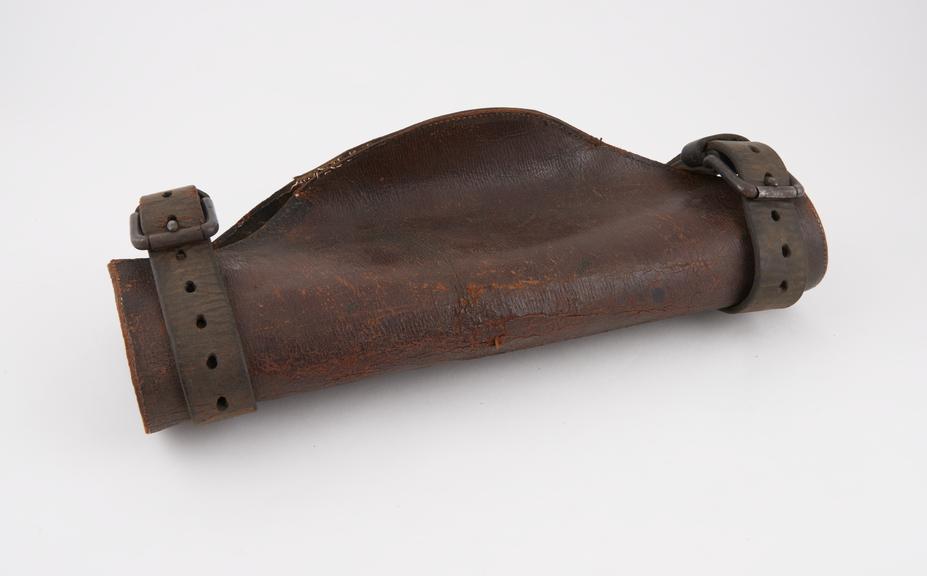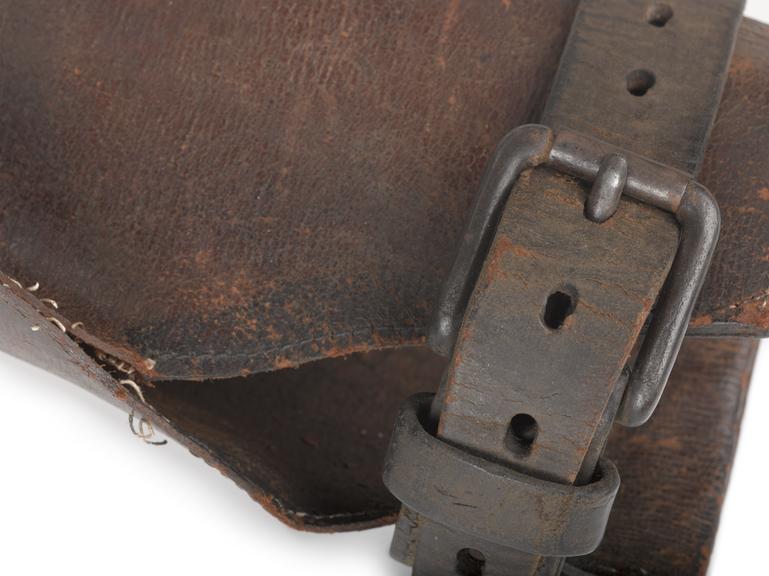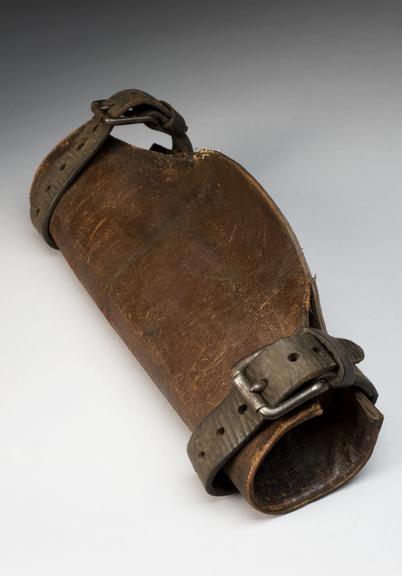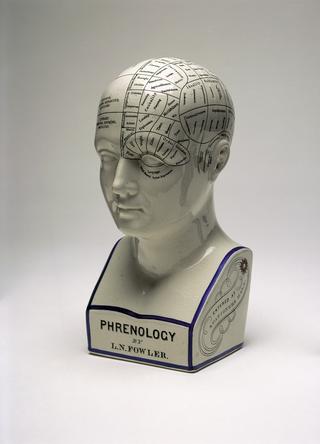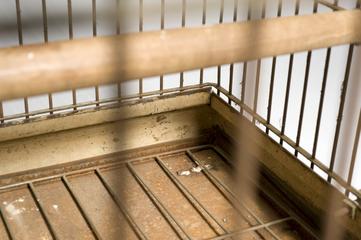




Replica of a forearm restraint, made of leather with iron buckles. The original, probably from the late 19th or early 20th century, was found around 1930 in a chest in the cellar at Hanwell Asylum, the asylum on the outskirts of London whose superintendant, John Conolly (1794-1866), famously renounced all instruments of mechanical restraint in favor of 'moral treatment,' that is, regular labour under constant close surveillance.
A violent or unruly patient was contained using a forearm restraint. The original of this forearm restraint was found in a chest at the Hanwell Asylum in Middlesex in 1930. Hanwell Asylum is now West London Mental Health NHS Trust at St Bernard’s Hospital. The restraint is thought to date from the late 1800s or early 1900s.
The copy appears to be a highly accurate representation of the original because it shows marks of wear and tear. Hanwell Asylum’s superintendent was John Conolly (1794-1866). He famously renounced instruments of mechanical restraint in favour of ‘moral treatment’. Moral treatment was regular labour under constant surveillance. It is possible copies made of this and other articles found at the same time were created to illustrate to patients and staff the former treatment of inmates.
Details
- Category:
- Psychology, Psychiatry & Anthropometry
- Collection:
- Sir Henry Wellcome's Museum Collection
- Object Number:
- A602821
- Materials:
- leather and buckles, iron
- Measurements:
-
overall: 100 mm x 340 mm x 125 mm, .35kg
- type:
- arm restraint
